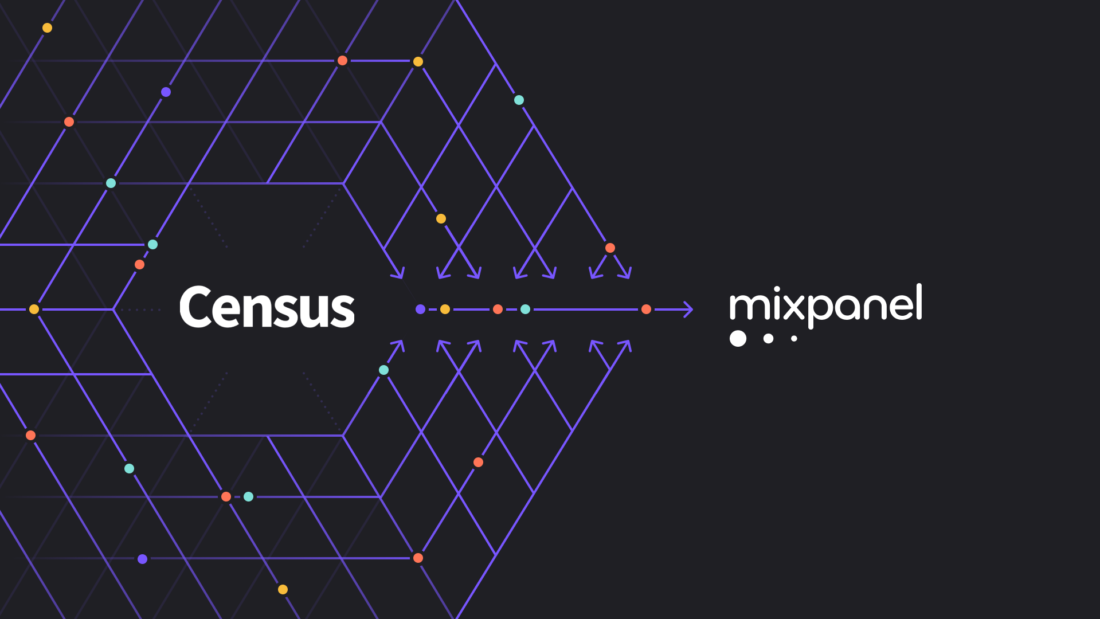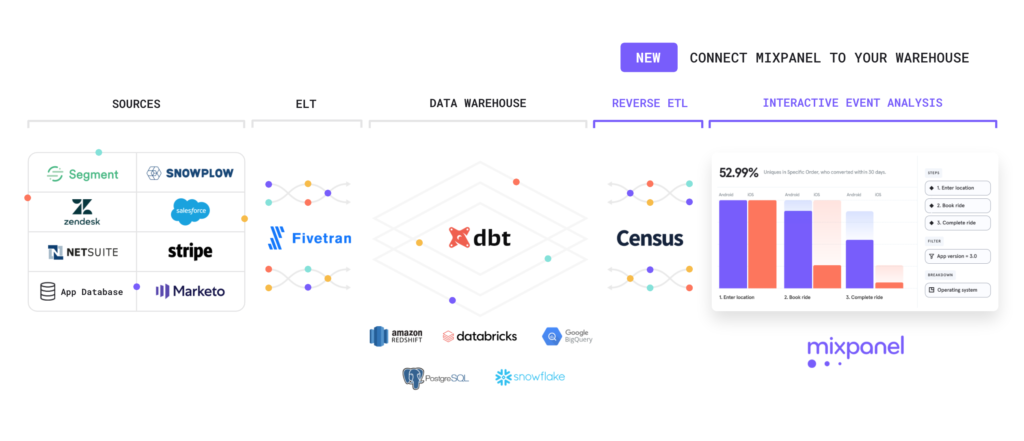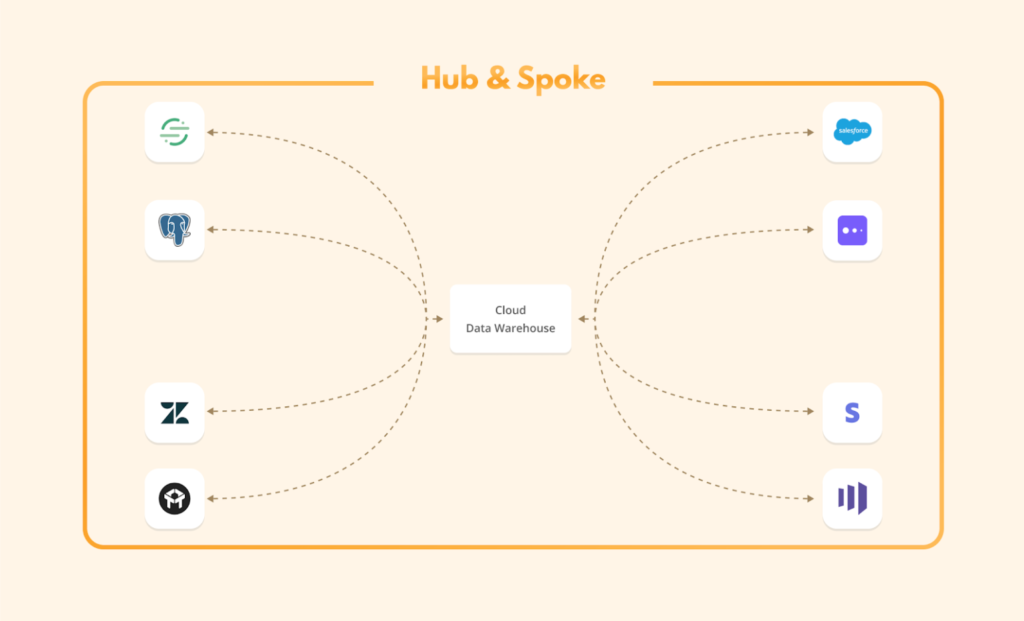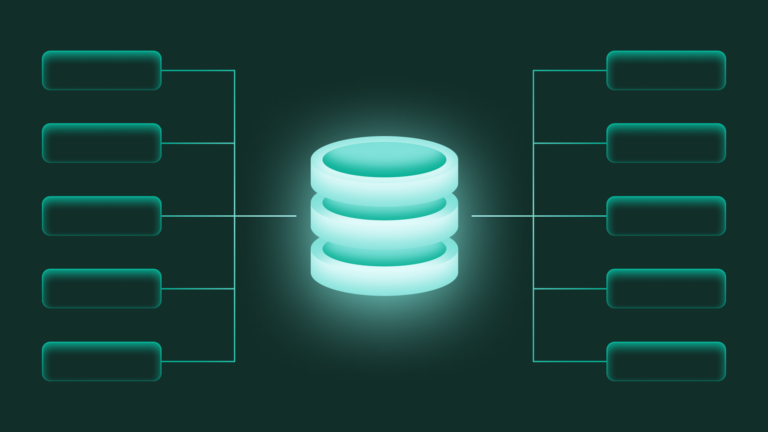
Product analytics in the modern data stack
We’re thrilled to release an integration with Census that makes any major cloud warehouse the data source for Mixpanel. Whether you use Snowflake, Google BigQuery, Amazon Redshift, Postgres, or Databricks to store your event data, you can sync that same data to Mixpanel. No separate SDK or pipelines required; just a couple lines of SQL in Census.
This gives product teams the ability to quickly learn about their users within Mixpanel’s interactive reports. With only a few clicks, you can do custom funnel, flow, cohort, and retention analysis—all with trusted data from your company’s source of truth.

“I’m excited about our partnership with Mixpanel, as their vision of making data accessible to anyone in the organization is one of the many reasons I founded Census in the first place,” says Boris Jabes, CEO of Census.
“I believe that by connecting Mixpanel to cloud warehouses with Census, it empowers non-technical teams to do more in-depth analyses by combining existing behavioral data with new insights and aggregated metrics built by data teams. All of this, without having to write code or SQL queries,” he adds.
Why connect product analytics to your warehouse?
At Mixpanel, we’ve seen product-led companies increasingly use data to learn about their users’ needs and create a competitive advantage. To put a number on it, we scanned 1 quadrillion events to serve customer queries in January 2021, which is up 130% in just the last year.
While the appetite for product analysis and user insights has continued to grow rapidly, the underlying data infrastructure companies use has changed considerably in recent years. We’ve observed two big trends:
1) More and more companies are centralizing data in a cloud data warehouse.
Advancements in warehouse scale, speed, flexibility, and cost-effectiveness have made this type of “hub and spoke architecture” possible. With this setup comes the ability to unify, clean, validate, and version control company data before it’s used throughout the business.

2) This centralization has created new challenges in operationalizing data.
For data to be broadly useful, it needs to be fed into the specialized SaaS tools that people rely on for day-to-day productivity in their roles—no easy feat. These tools include Mixpanel, Salesforce, Stripe, and thousands of others.
In relation to analytics, specifically, centralization around the warehouse has made analysis harder for everyday business users. Tristan Handy, CEO of data transformation company dbt, outlines this in his post titled, The Modern Data Stack: Past, Present, and Future:
“With consolidation into a centralized data infrastructure, we’ve lost differentiated analytical experiences for specific types of data. Purpose-built experiences for analyzing web and mobile data, sales data, marketing data are critically important.”
Event streams are the foundation for understanding product usage trends, and until the Census-Mixpanel integration, there was no specialized analytics interface that synced seamlessly to data warehouses. SQL and business intelligence have many benefits, but face major limitations when tasked with meeting the need for fast, interactive data exploration.
Getting started with the integration
If you’re already a customer of both Mixpanel and Census, there’s no additional cost to use the integration.
- To learn how it works, check out this quick video.
- To get set up, head to the quickstart guide.
More about Census
Census is how the best data teams sync their customer data from their warehouse, to the apps that the sales, marketing or product teams use daily. With Census, writing SQL is all it takes. No custom code, API integration, or code deployment to take action on your data.






